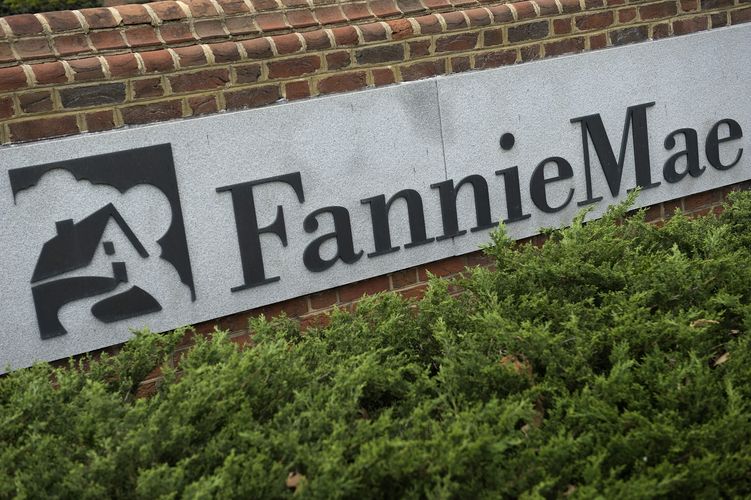Boring is good. Investors looking for steady income streams from a reliable issuer line up every time Fannie Mae comes to market.
To view the digital version of this report, please click here.
Although the mortgage finance company is consistently among the world’s largest issuers of debt securities – it is in the market less frequently these days. That as much as anything has helped ratchet up demand.
“There is just a huge demand for Treasury-like bonds,” said Ralph Axel, analyst at Bank of America Merrill Lynch in New York.
The volatility in Europe and the fact that a number of the sovereign, supranational and agency issuers are no longer as highly rated as they used to be has driven investors towards US agency markets, said one dealer.
He defined the issuance of Fannie benchmark securities as boring, but noted that for many investors boring was sexy. In the past year fund managers have boosted their allocations to agency debt, as have banks and corporations. They are taking up the slack as central banks pull back.
Fannie priced its latest note, a US$4bn three-year benchmark note on May 17, at Treasuries plus 21bp. The agency is achieving historically low spreads as it charts a course to becoming a safe and sound entity. In February the agency priced a benchmark note at Treasuries plus 15.5bp approaching Treasuries plus 13bp it achieved in 2010 on a two-year note.
Although Fannie is not considered opportunistic, it is driven to find the lowest possible funding costs, which is achieved by reaching out to a large, diverse set of investors across the globe, said another dealer.
Still, it faces the same hurdles that any other issuer faces.
“Like any other trade, sometimes the market will collapse when you are in the middle of marketing — in that respect they face the same hurdles that any other issuer faces, but I don’t think we’ve fallen short of expectations since the US turned things around,” the dealer said. That and the programmes have become smaller. Barclays, UBS and BNP Paribas are the top underwriters for Fannie.
The agency had been issuing benchmark notes for 10-years heading into 2008 when the housing market abruptly collapsed taking the US economy with it. Then US Treasury Secretary Henry Paulson seized Fannie and its twin Freddie Mac putting both in conservatorship. Until then, both issued debt under an implied guarantee that the US government would back-stop the debt. When Treasury put the agencies under conservatorship the implicit guarantee became more explicit.
Spreads blew out in 2008 and 2009 but have come back since then as investors embraced new guarantees from Treasury.
“There was a great effort in 2008 to convince investors that Treasury standing behind the agencies was an effective guarantee instead of a quasi guarantee,” said another dealer.
Foreign investors backed away from the names initially, most notably China, the dealer said. Since then many investors have preferred debt of Ginnie Mae, which enjoys an explicit guarantee backed by the full faith and credit of the US government.
Changing the mix
Still, the flight to quality has meant increased demand for Fannie. But it comes as the agency is shrinking its balance sheet and its need for funding.
Supply for Fannie, Freddie and Home Loan were down US$180bn last year. The percentage decline in the first five months of this year has been as great as the entire decline in 2011. As a result spreads have tightened. The make-up of the debt has also changed.
Last year, five-year bullets made up 30% of its issuance. In the first five months of 2012, five and three-year bullets each made up 50% of the issuance. The two-year, which made up 19% of the bullet issuance in 2011, has disappeared. Freddie Mac’s move towards longer dated debt has been even more dramatic with the agency issuing its first 10-year since 2009. Freddie, however, has a better mix, giving investors two and three-year notes as well.
In addition to extending maturities, the agencies have moved away from floating rate securities, which accounted for 36% of issuance in 2011 down to just 10% so far this year.
Fannie had US$275.6bn in benchmark notes and bonds outstanding at the end of the first quarter, down from US$277.4bn at the end of 2011 and down from US$300bn at the end of 2010. The agency has been shrinking the pool of discount notes even faster. Fannie had about US$110.4bn in discount notes outstanding at the end of the first quarter down from US$146.8bn at the end of 2011 and US$152bn in 2010. It had only issued US$15bn in benchmark notes in the first quarter and another US$8bn through the first half of May.
For 2011 Fannie’s net issuance of long-term debt, the difference between long-term debt issued and long-term debt repaid, was negative US$46bn. In the first quarter, it was negative US$11.9bn.
All politics is local
Since coming under the government’s wing, Fannie and Freddie have been a political hot potato. Interestingly, in the shadow of a presidential election, the hyper partisan bickering over the collapse, rescue and future of Fannie Mae and Freddie Mac has died down. Calls for the government to get out of the housing markets entirely in favour of a total privatisation have been quieted by the reality that there is no quick solution to privatise a US$5trn agency market.
“Even the staunchest critics of the GSEs have come to appreciate their critical role in the marketplace,” said Axel. In an election year, no one wants to attack GSEs, because it looks like they are against a housing recovery, he said. That has given the GSEs breathing room and it has given investors a level of comfort.

